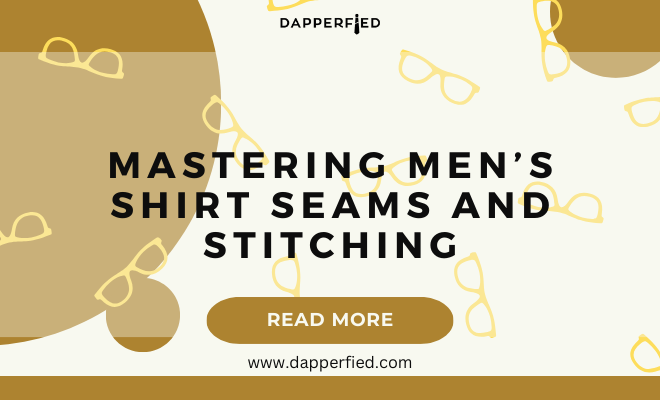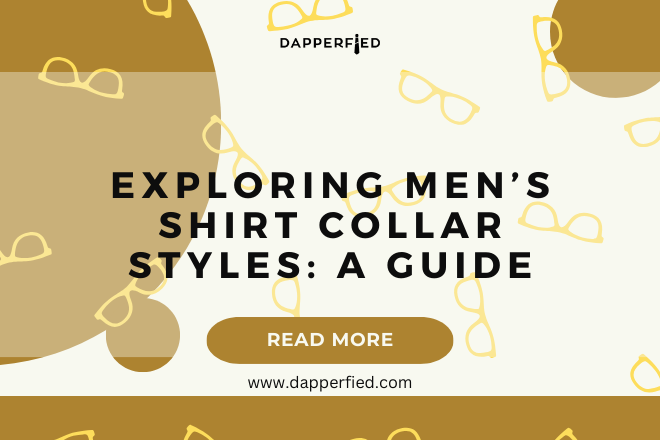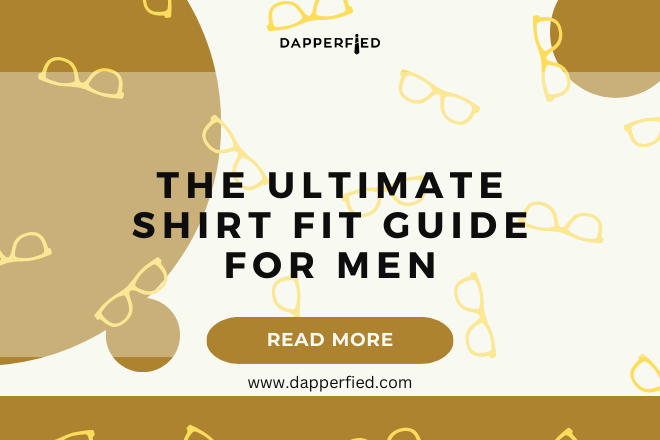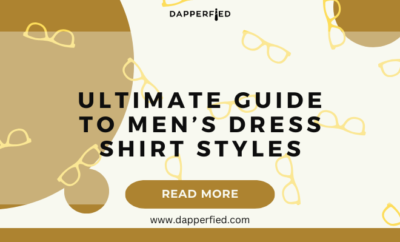
Men's Style
Mastering Men’s Shirt Seams and Stitching
When it comes to shirt construction, understanding the different types of seams is crucial for achieving a professional finish. The most common types of shirt seams include plain seams, French seams, flat-felled seams, and overlocked seams. Plain seams are the most basic type of seam, created by sewing two pieces of fabric together with the raw edges enclosed. French seams are similar to plain seams, but they are enclosed within the fabric for a clean finish on the inside of the garment. Flat-felled seams are commonly used in shirt construction, especially for durable and neat finishes. These seams are created by sewing the fabric together with one edge enclosed within the other, resulting in a strong and flat finish. Overlocked seams, also known as serged seams, are finished with a serger machine to prevent fraying and provide a clean edge.
In addition to these basic seam types, there are also variations such as topstitched seams, lapped seams, and bound seams that can be used for specific design details or functional purposes. Topstitched seams are decorative and functional, adding strength and a professional look to the garment. Lapped seams are commonly used in tailored shirts, where one fabric edge is folded over the other and topstitched for a clean finish. Bound seams involve enclosing the raw edges of the fabric within bias tape or fabric strips for a neat and durable finish. Understanding the characteristics and uses of each type of seam is essential for choosing the right construction technique for different shirt styles and fabrics.
Key Takeaways
- There are various types of shirt seams, including plain seams, French seams, and flat-felled seams, each with its own unique characteristics and uses.
- Different stitching techniques, such as straight stitching, zigzag stitching, and topstitching, should be chosen based on the type of fabric and the desired strength and appearance of the seam.
- To reinforce shirt seams for durability, consider using seam tape, stay stitching, or edge stitching, and always backstitch at the beginning and end of each seam.
- Common issues with shirt seams, such as puckering, stretching, and seam slippage, can be troubleshooted by adjusting tension, using the correct needle and thread, and properly handling the fabric.
- Mastering the flat-felled seam technique is essential for achieving a professional finish, especially for garments that require strong and neat seams, such as dress shirts and denim clothing.
- Pressing and finishing shirt seams is crucial for achieving a polished look, and techniques such as understitching, grading, and clipping can help reduce bulk and create a smooth and clean seam.
- Advanced techniques for shirt seam construction, such as French seam variations, mock flat-felled seams, and decorative seam finishes, can elevate the quality and aesthetics of the garment.
Choosing the Right Stitching Technique for Each Seam
Once you have a good understanding of the different types of shirt seams, it’s important to choose the right stitching technique for each seam to ensure durability and a professional finish. For plain seams and French seams, a straight stitch with a medium stitch length is commonly used on a sewing machine. It’s important to backstitch at the beginning and end of each seam to secure the stitches. When sewing flat-felled seams, a combination of straight stitches and zigzag stitches is used to encase the raw edges and create a strong, flat finish. Overlocked seams are created using a serger machine with overlock stitches to prevent fraying and provide a clean edge.
For topstitched seams, a straight stitch is used along the seam line, followed by another row of stitching parallel to the first to create a decorative and functional finish. Lapped seams require precision stitching to fold one fabric edge over the other and topstitch it in place for a clean finish. Bound seams involve stitching the bias tape or fabric strips to encase the raw edges of the fabric, ensuring durability and a neat appearance. Choosing the right stitching technique for each seam is essential for achieving professional results and ensuring that the garment withstands wear and tear.
Tips for Reinforcing Shirt Seams for Durability
Reinforcing shirt seams is essential for ensuring durability and longevity of the garment. There are several tips and techniques that can be used to reinforce shirt seams, depending on the type of seam and fabric being used. One common method for reinforcing shirt seams is to use a straight stitch followed by a zigzag stitch along the raw edges of the seam allowance. This technique helps prevent fraying and adds strength to the seam. Another method is to use seam tape or twill tape to stabilize the seam and prevent stretching, especially in areas such as shoulder seams or armholes where there is more stress on the fabric.
For flat-felled seams, reinforcing the seam with an additional row of stitching can add extra strength and durability to the construction. Using topstitching or edge stitching along the seam lines can also reinforce the seams and add a decorative touch to the garment. When working with delicate fabrics or fabrics that tend to fray easily, using French seams or bound seams can provide extra reinforcement and prevent fraying. It’s important to choose the right reinforcement technique based on the fabric and type of seam to ensure that the garment withstands regular wear and washing.
Troubleshooting Common Issues with Shirt Seams
| Issue | Cause | Solution |
|---|---|---|
| Uneven Seams | Uneven fabric tension | Adjust sewing machine tension |
| Skipped Stitches | Dull needle or incorrect needle size | Replace needle or use correct size |
| Puckered Seams | Incorrect presser foot pressure | Adjust presser foot pressure |
| Uneven Hem | Uneven fabric feed | Check feed dog and presser foot |
While constructing shirt seams, it’s common to encounter issues that can affect the overall quality and appearance of the garment. One common issue with shirt seams is puckering, which can occur when the tension on the sewing machine is too tight or when sewing fabrics with different stretch properties together. To troubleshoot puckering, adjusting the tension on the sewing machine and using a walking foot can help prevent stretching and ensure smooth, even stitches. Another common issue is seam slippage, which can occur when sewing slippery or loosely woven fabrics. Using seam tape or twill tape to stabilize the seam can prevent slippage and ensure that the seam stays in place.
Additionally, issues such as skipped stitches or uneven seam allowances can affect the overall quality of shirt seams. To troubleshoot skipped stitches, changing the needle or adjusting the tension on the sewing machine can help ensure that stitches are formed properly. Uneven seam allowances can be corrected by trimming excess fabric and pressing the seam allowance flat for a clean finish. It’s important to address these common issues with shirt seams to ensure that the garment meets professional standards and withstands regular wear.
Mastering the Flat-Felled Seam for a Professional Finish
The flat-felled seam is a popular choice for shirt construction due to its durability and neat finish. Mastering this seam construction technique is essential for achieving professional results in shirt making. To create a flat-felled seam, start by sewing the fabric pieces together with wrong sides facing, using a 5/8 inch seam allowance. Trim one side of the seam allowance to half its width, then fold the wider seam allowance over the trimmed edge, encasing it within the fold. Press the seam flat, then topstitch along the folded edge to secure the seam in place.
To achieve a professional finish with flat-felled seams, it’s important to trim the seam allowance accurately and press it flat before topstitching. Using an edge stitching foot or adjustable guide on the sewing machine can help maintain an even distance from the folded edge while topstitching. Additionally, backstitching at both ends of the topstitched seam can ensure that the stitches are secure and prevent unraveling. Mastering the flat-felled seam construction technique is essential for creating durable and professional-looking shirts.
The Importance of Pressing and Finishing Shirt Seams

Pressing and finishing shirt seams is an essential step in shirt construction that can greatly impact the overall appearance and quality of the garment. Proper pressing techniques help flatten seams, set stitches, and create a polished finish. When pressing shirt seams, it’s important to use an iron set to the appropriate temperature for the fabric being used. Steam can be used to help set creases and flatten stubborn seams, but it’s important to test on a scrap piece of fabric first to avoid water marks or damage.
In addition to pressing shirt seams, finishing techniques such as trimming excess fabric, grading seam allowances, or using pinking shears can help reduce bulk and create a clean finish on the inside of the garment. Trimming excess fabric from seam allowances helps reduce bulk and prevents visible ridges on the outside of the garment. Grading seam allowances involves trimming each layer of fabric to a different width to reduce bulk in areas such as curved seams or neckline edges. Using pinking shears to trim seam allowances can prevent fraying and provide a neat finish on lightweight fabrics. Proper pressing and finishing techniques are essential for achieving professional results in shirt making.
Advanced Techniques for Shirt Seam Construction
In addition to mastering basic shirt seam construction techniques, there are advanced techniques that can be used to elevate the quality and appearance of shirt seams. One advanced technique is using decorative topstitching or edge stitching to add design details and reinforce seams at the same time. Decorative topstitching can be used along collar edges, pocket flaps, or yokes to add visual interest and strength to these areas. Edge stitching can be used along plackets or cuffs for a clean finish and added durability.
Another advanced technique is using flat-felled seams with double-needle topstitching for a high-end finish on shirts. Double-needle topstitching creates parallel rows of stitching along flat-felled seams, adding strength and a decorative touch to the garment. This technique requires precision stitching and careful attention to detail for professional results. Additionally, incorporating hand-sewn details such as hand-picked hems or hand-finished buttonholes can elevate the quality of shirt construction and add a personalized touch to each garment.

Mastering advanced techniques for shirt seam construction requires practice, precision, and attention to detail. These techniques can be used to create high-quality shirts with durable seams and professional finishes that stand out in terms of craftsmanship and design.
In conclusion, understanding different types of shirt seams, choosing the right stitching technique for each seam, reinforcing shirt seams for durability, troubleshooting common issues with shirt seams, mastering flat-felled seam construction, pressing and finishing shirt seams properly, and mastering advanced techniques for shirt seam construction are all essential aspects of creating high-quality shirts with professional finishes. By incorporating these techniques into shirt making, sewers can achieve durable garments with impeccable construction that stand out in terms of craftsmanship and design.
If you’re interested in men’s fashion and accessories, you may also want to check out this article on men’s oversized watches. It discusses the trend of larger timepieces and how to style them with different outfits. It’s a great complement to learning about men’s shirt seams and stitching, as it provides insight into another important aspect of men’s style.
FAQs
What are the different types of seams used in men’s shirt construction?
There are several types of seams used in men’s shirt construction, including flat-felled seams, French seams, overlocked seams, and double-stitched seams.
What is a flat-felled seam?
A flat-felled seam is a type of seam where the raw edges of the fabric are enclosed within the seam, creating a clean and durable finish. This type of seam is commonly used in men’s shirt construction for its strength and neat appearance.
What is a French seam?
A French seam is a type of seam where the raw edges of the fabric are enclosed within two layers of fabric, creating a clean and polished finish on the inside of the garment. This type of seam is often used in men’s shirt construction for a professional and refined look.
What is an overlocked seam?
An overlocked seam is a type of seam where the raw edges of the fabric are enclosed within a row of overlocking stitches, creating a neat and finished edge. This type of seam is commonly used in men’s shirt construction for its ability to prevent fraying and provide a clean finish.
What is a double-stitched seam?
A double-stitched seam is a type of seam where two rows of stitching are used to secure the fabric together, providing extra strength and durability. This type of seam is often used in men’s shirt construction for its ability to withstand the stress and movement of the garment.















